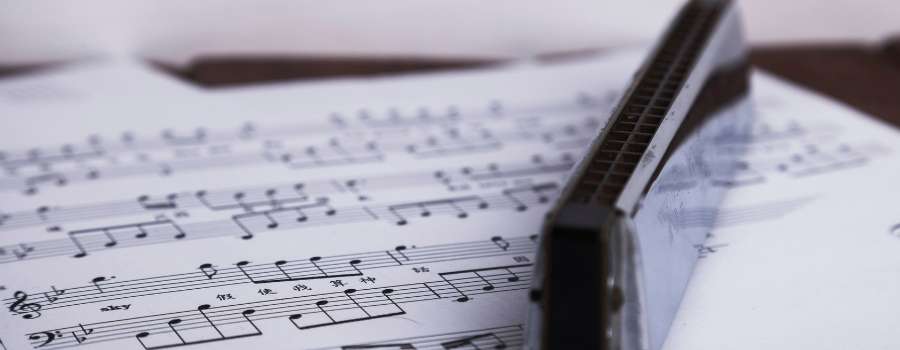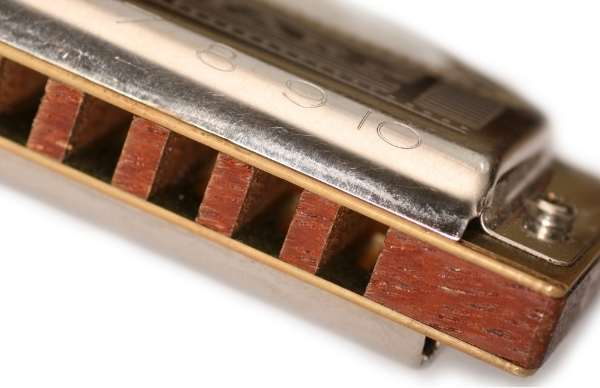
Anyone unfamiliar with the harmonica may be surprised to learn that these instruments can go out of tune. After all, to look at one, the harmonica is just a simple metal case covering a few metal reeds. Yet the harmonica is more delicate than you might think. If you’ve never stopped to wonder how harmonica tuning works, you’ll probably have a few questions.
Harmonicas have always seemed like they can just be tossed in a backpack or random drawer in your home, so that got me thinking about harmonica tuning…musical instruments are fairly delicate devices, are harmonicas any different?
In this article, I’ll explore the little-known world of harmonica tuning. I’ll discuss some of the ways that harmonicas fall out of tune and take a look at how you can change your instrument’s tuning if need be. I’ll also share tips on how to keep your instrument in tune so you don’t have to tune it as often.
Can Harmonicas Go Out Of Tune?
Although harmonicas are made of durable metal parts, they can fall out of tune like any other instrument. Most harmonics stay in tune for a few months but, if you play regularly, your instrument may need tuning more often. To change your instrument’s tuning, you’ll have to adjust the internal reeds, which can take a lot of patience if you’ve never tried it before.
Dropping your instrument, playing it regularly, or exposing it to sudden climate changes can all affect the intonation of your harmonica. If it’s too humid, the reeds can swell and get stuck, causing them to sound flat, and simply wearing out the reeds can create a harsh sound.
If you’re unsure if your instrument is out of tune, pay close attention to its sound. If a harmonica is out of tune, it will sound harsh and discordant. The notes will not blend together smoothly, and the overall sound will be unpleasant. If you’ve recently dropped your instrument, you may even be able to see bent or misaligned reeds when looking into the case.

How Long Do Harmonicas Stay In Tune?
Compared to other instruments, harmonicas are pretty durable. Even if you play your harmonica every day, you should be able to get a solid 6 months of practice before you need to tune your instrument. Older harmonicas are more likely to fall out of tune sooner but, if you’re playing a modern, high-quality harmonica, you shouldn’t have to worry about it staying in tune.
Nevertheless, harmonicas will eventually go out of tune. It’s only natural for the vibrating reeds to slowly warp, wear down, or slip out of place. Fortunately, though, you can keep your harmonica in tune by following these easy guidelines:
- Keep your instrument clean – It’s best to not let an instrument sit unused for too long. Try to practice every day and remember to clean it after each use. If saliva gets trapped within the reeds, they may rust or degrade, ruining the quality of your instrument’s sound.
- Properly store your instrument – After you’ve practiced, always remember to store your harmonica in a cool, dry place that’s away from direct sunlight. This will prevent humidity from ruining the internal valves and reeds and keep your instrument in tune.
- Handle with care – Like any other musical instrument, your harmonica is delicate and should be treated with care. Avoid dropping it, as this can cause the internal reeds to become misaligned. If you notice any physical damage, take your harmonica to a professional for repairs as soon as possible. Otherwise, you run the risk of making the problem worse and ruining your harmonica beyond repair.
As long as you follow these precautions, your harmonica should stay in tune for a long time.
How Do You Change The Tuning Of A Harmonica?
To tune a harmonica, you’ll have to file the offending reeds. If a reed is a little too sharp, file away part of its base. If it’s too flat, file from the tip of the reed. Just be sure to file lengthwise to avoid damaging the rest of your instrument. Alternatively, you can take your instrument to a professional to have it tuned without risk.
Tuning a harmonica isn’t easy but, with the right tools and enough patience, you should be able to fix your out-of-tune instrument in less than an hour. If you’re unsure where to find tuning tools, you can always go to your local music store. Most places that sell harmonicas also sell tuning equipment.
So, if you’re willing to take on the task, follow these quick steps to put your harmonica back into tune:
- Assemble your tools – Unless you have perfect pitch, you’ll need to use a tuner to gauge how much of the reed needs filing. A basic guitar tuner will do, as long as it can pick up and identify sounds. You can find harmonica tuning sets or purchase a tuning multi-tool from most harmonica shops.
- Open your harmonica – You’ll need to loosen and remove the screws holding the outer case in place. Once open, remove the reed plates from your harmonica’s internal comb.
- File the out-of-tune reeds – Before you start filing, slip a thin shim under the reed to lift it into position. Slowly file the reed from the tip to raise the pitch or from the base to lower its pitch. Test the note after every few strokes to avoid over-tuning your instrument.
- Close your harmonica – After you’ve tested and tuned every reed, slip the reed plate back into place and tighten the screws that hold the outer case together.
As you’re filing the reeds, be careful to avoid pressing them too hard. Too much pressure will bend the reeds, making it much harder to tune them. If you damage your instrument, you’ll have to take it to a professional harmonic shop to get it fixed.
Final Thoughts
Compared to violins and guitars, harmonicas are relatively durable. They can go several months without having to be tuned but, as with any instrument, they will eventually need some maintenance. Tuning a harmonica isn’t the easiest of tasks but, with a tuning tool and some patience, you’ll be able to fix your instrument in no time.
